If the cooler weather hadn’t told us, we would have known it was the first day of autumn because workmen in Tarleton Street in the city centre were putting up the Christmas lights. Although we were planning to go to Festival Gardens, our first stop was a nearby patch of sown wildflowers which John had spotted from the bus along Riverside Drive. We found it, on the west side of the road between the ends of the curved Bempton Road.
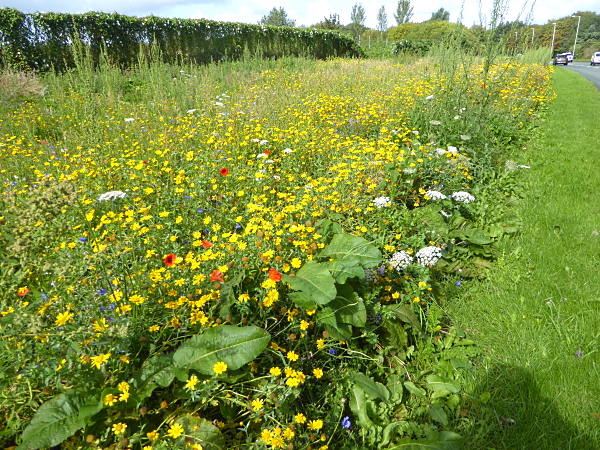
It appeared to have been sown with a more varied mix than the one at Rimrose Valley last week. There were no Ox-eye Daisies but we noted the usual Poppy, Cornflower and Corn Marigold. White was provided by Wild Carrot and Yarrow, and height by Evening Primrose, Great Willowherb and what we have been calling Mugwort, but was really Fat Hen. In amongst the other flowers were occasional Scabious, Self-heal, Mallow, Redshank, Nettle and Dock. One of these Poppies appears to have four bees in it, scrambling for nectar.
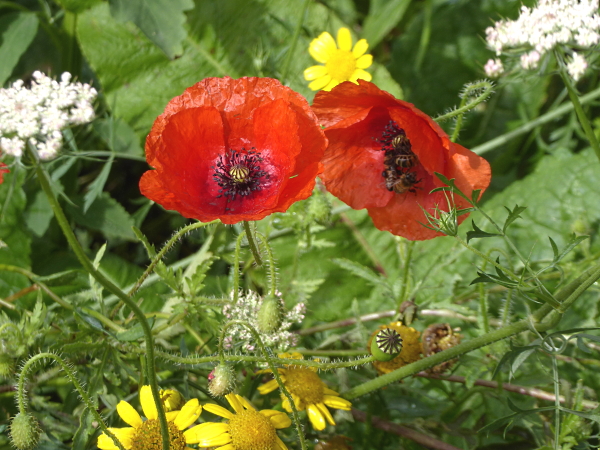
The reason we double-checked the tall “Mugwort” and decided it was more likely to be Fat Hen was that Margaret found a patch of tiny eggs in a marvellously neat array on the upper side of one of its leaves. The leaf was only about three inches (8cm) long, so these are very small eggs.
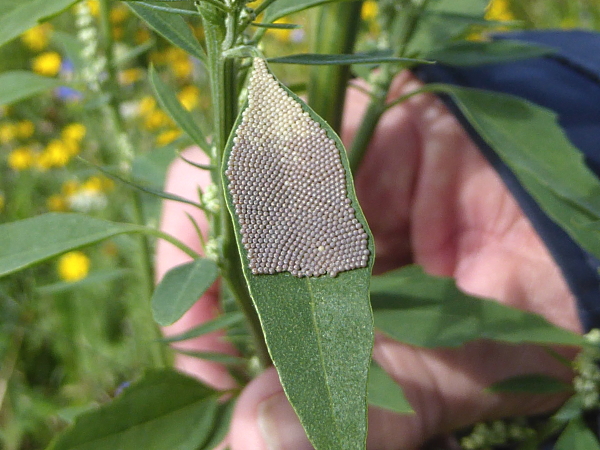
We assume they were laid by a butterfly or a moth, so what likes Fat Hen Chenopodium album as its food plant? Internet searches found only four possible moths.
Bright-line Brown-eye Lacanobia oleracea is fairly common, and is found in this area, but it is said to lay eggs on the underside of leaves in loose clumps. Not that one.
Heart and Dart Agrotis exclamationis is said to be common and abundant, and it is found in this area. No idea what its eggs are like, but this might be what it was.
Heart and Club Agrotis clavis is said to be scarce, but there are records of it in the Merseyside area. I found no pictures of its eggs, and this MIGHT be the one, but is less likely.
Speckled Case-bearer Coleophora sternipennella is a rare micro-moth, said to be nationally scarce. The nearest records on the NBN Atlas are in the Llandudno / Colwyn Bay area. The odds aren’t good that the eggs would be of that particularly rare creature.
While we were hunting for the wildflower meadow along Riverside Drive we spotted lots of autumnal trees and shrubs. There were several Swedish Whitebeams by the car park at the bottom of Jericho Lane, with leaves like oak but berries like Rowan. Easy to get confused by that one.
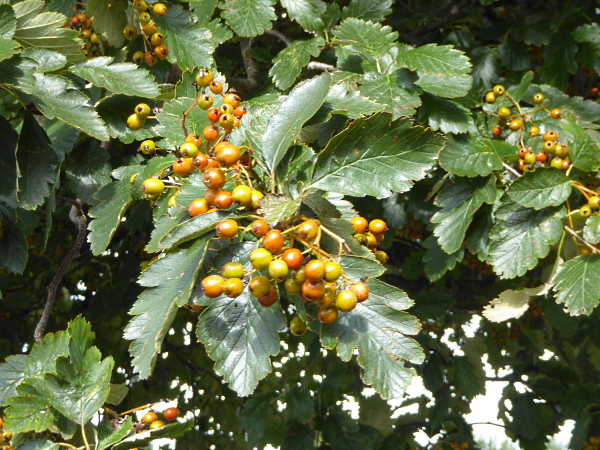
Along Riverside Drive the Horse Chestnuts have been very strongly infested with the Horse-Chestnut Leaf Miner moth larvae, Cameraria ohridella, although it doesn’t seem to have stopped the production of big fat conkers. The moth is a new arrival to Britain, first seen in London in 2002 and I think we saw our first examples in Reynold’s Park in August 2014.
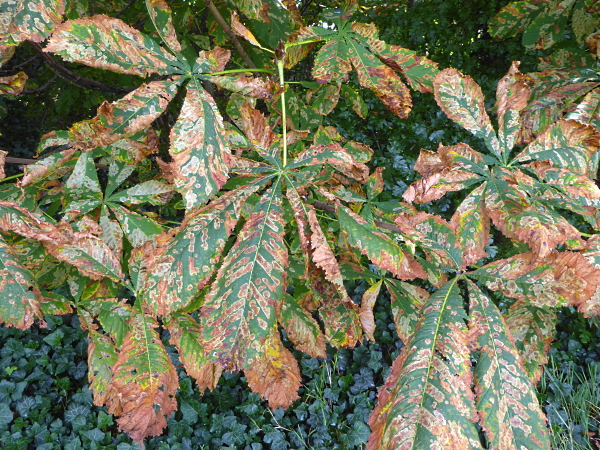
Some of the Alders were also infested, chewed to lace by the grubs of the rather handsome blue-black Alder Leaf beetles Agelastica alni. The adult beetles are only 6-7mm long. This is another newly-arrived tree pest, first observed in Manchester in 2004, and we saw our first in Chester in May 2014.
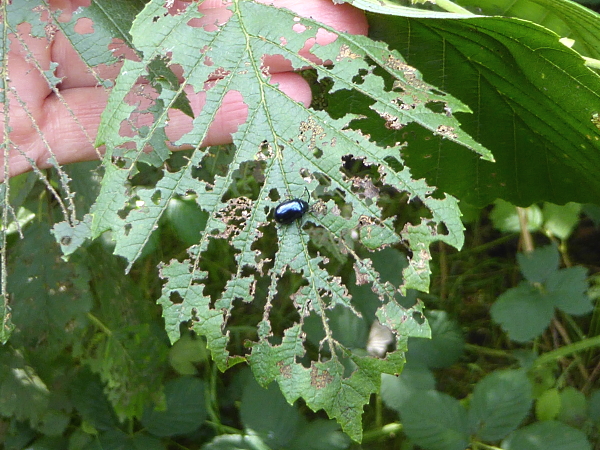
The Festival Gardens near Otterspool Prom are on the site of the former International Festival Garden, which opened to much fanfare in 1984 but closed in 1996. For several years it was a disappointing eyesore, but part of the site re-opened in 2012. The garden is now managed by The Land Trust, and some of it is pretty, and some still looks rather neglected. One of the best bits is the small wildlife pond, where we found a hunting Heron, belly-deep amongst the water-lilies and water mint, which caught a small fish.
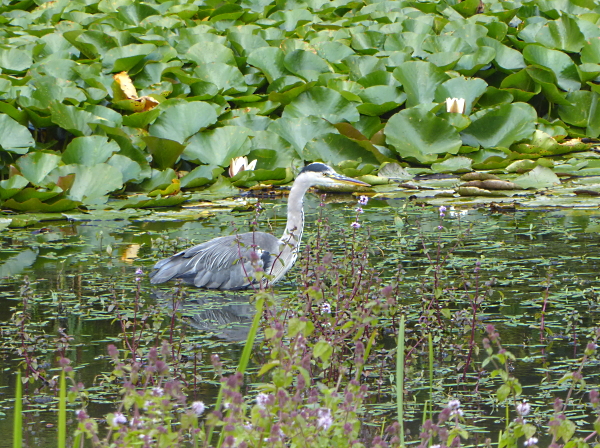
The Guelder Roses are now putting out their lovely luminous red berries.
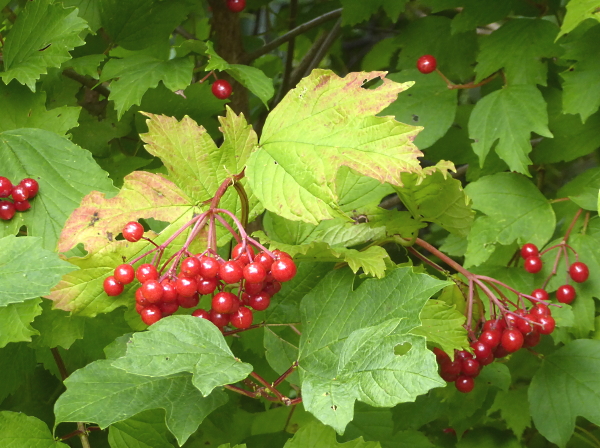
Around the back of the pond we found a Hop Vine scrambling over an old fence.
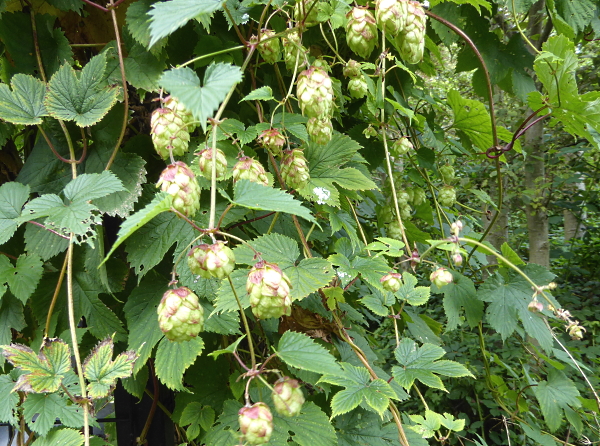
It was approaching high tide on the river and the stiff westerly breeze was piling the water up even more. Some large yachts were tacking alarmingly around the buoys, and we admired the fearlessness of the crew members hanging off the “up” sides.

We came back by the old Japanese Garden, looking for the Strawberry Tree hedging, but couldn’t find it. There were several other unusual trees there, though. One was either a Silver Maple or an Oriental Plane, but was showing early autumn colour which suggested Maple. A young white sapling looked dead, but it was sprouting vigorously from a low shoot on the left. A Foxglove Tree!
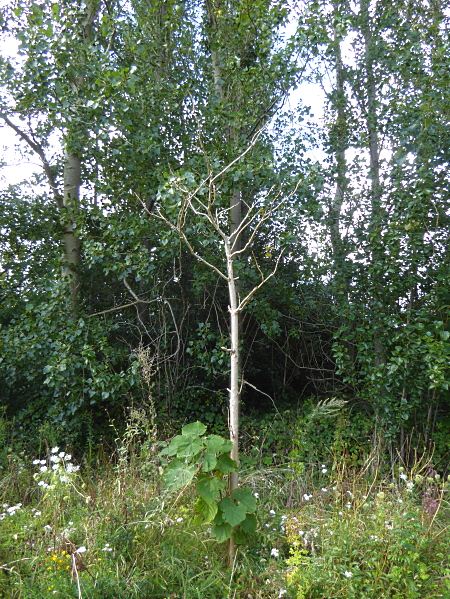
There was a Tulip Tree there too, and what we first thought was a Judas Tree, but that has alternate leaves and these were very similarly-shaped, but opposite. I think it is the lovely Katsura Cercidiphyllum japonica. It has wonderful autumn colour and the falling leaves are said to smell of burnt sugar or candy floss.
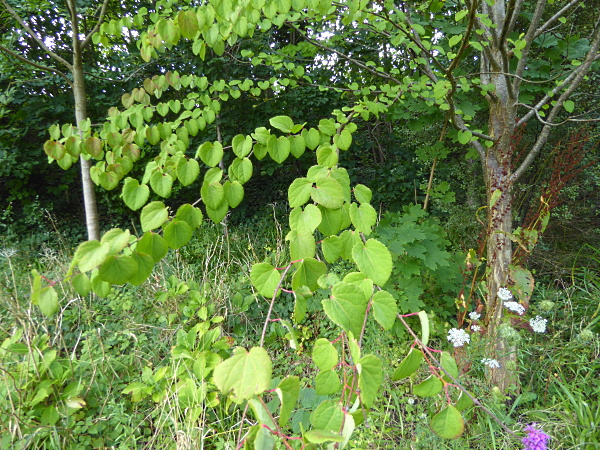
Public transport details: Bus 500 from Liverpool ONE bus station at 10.20, arriving Jericho Lane / Riverside Drive at 10.35. Returned on the 500 bus from Riverside Drive / Festival Gardens at 2.30, arriving back at Liverpool ONE bus station at 2.40.
